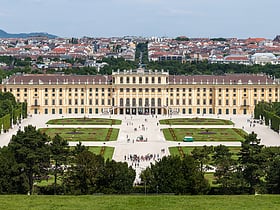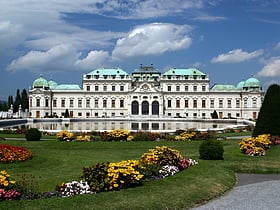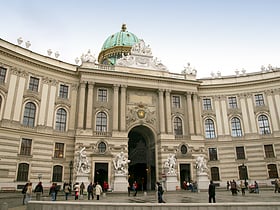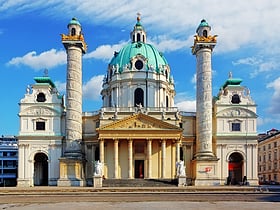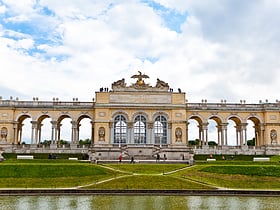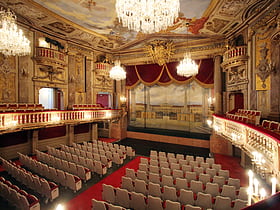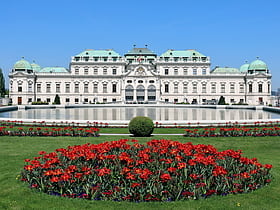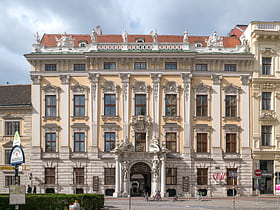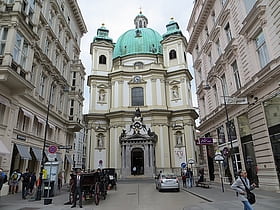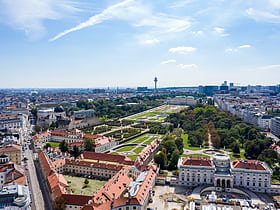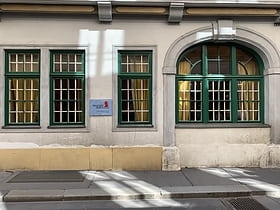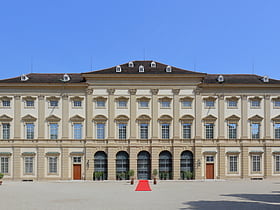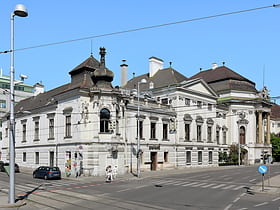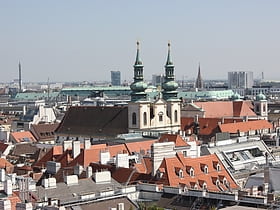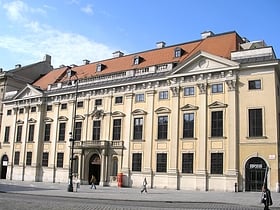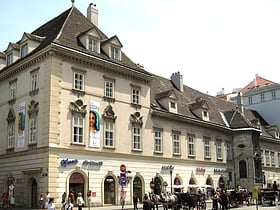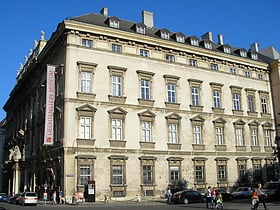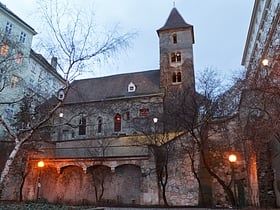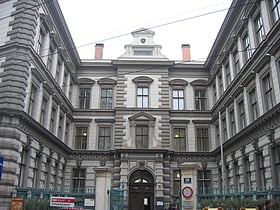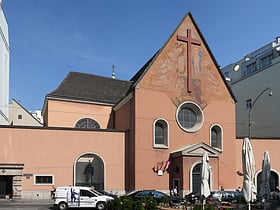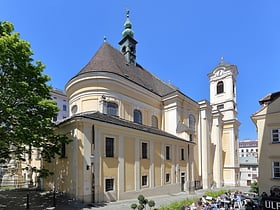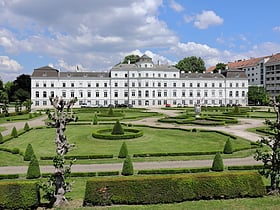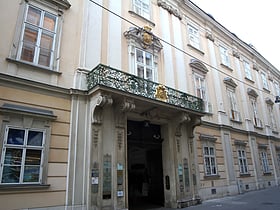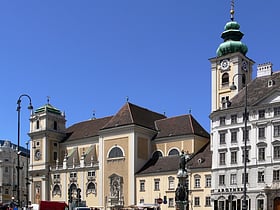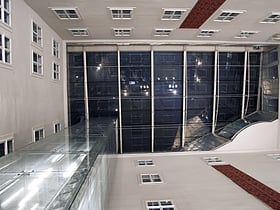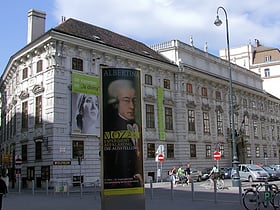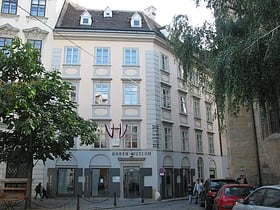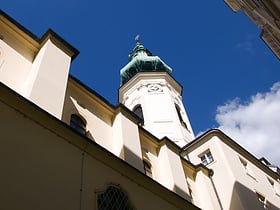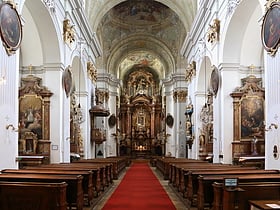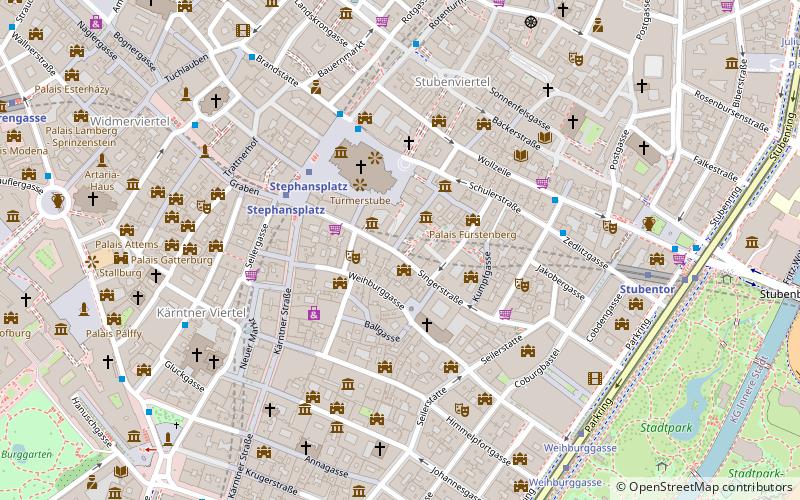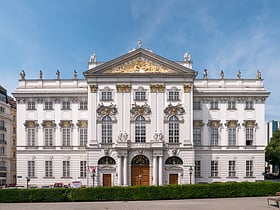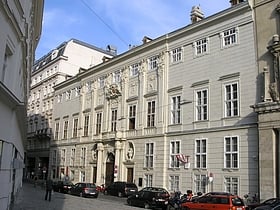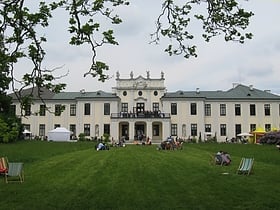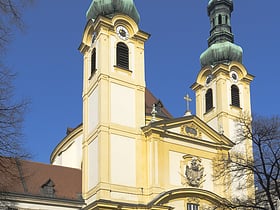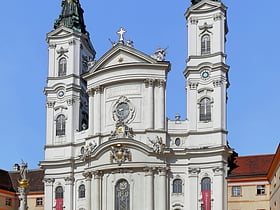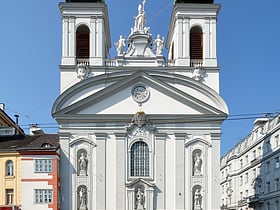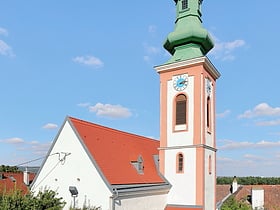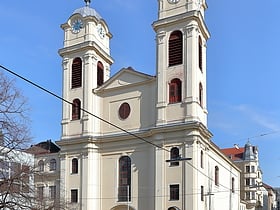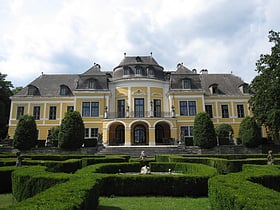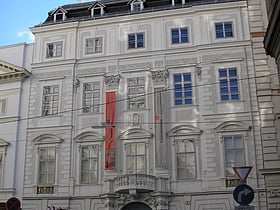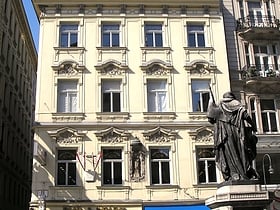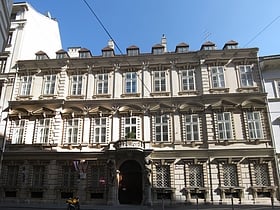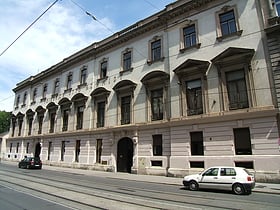Vienna: Baroque Architecture
Places and attractions in the Baroque architecture category
Categories
- Museum
- Church
- Baroque architecture
- Palace
- Art museum
- Historical place
- Specialty museum
- History museum
- Architecture
- Concerts and shows
- Park
- Neighbourhood
- Theater
- Art Nouveau architecture
- Shopping
- Square
- Art gallery
- Sacred and religious sites
- Neo-renaissance architecture
- Area
- Nightlife
- Cemetery
- Memorial
- Amusement park
- Gothic architecture
- Watersports
- Forts and castles
- Street
- Sport
- Sport venue
- Gothic Revival architecture
- Science museum
- Swimming
- Theophil Hansen
- Town
- Hill
- Natural attraction
- Shopping centre
- Opera
- Monuments and statues
- Concert hall
- Water park
- Universities and schools
- Romanesque architecture
- Nature
- Music venue
- Johann Bernhard Fischer von Erlach
- Bridge
- Garden
- Cafe
- Library
- Climbing
- Botanical garden
- Modern art museum
- Tower
- Sport complex
- Cinema
- Skyscraper
- View point
- Event space
- Otto Wagner
- Arenas and stadiums
Schönbrunn Palace
Baroque palace with opulent interiors Schönbrunn Palace, an emblematic historical site in the heart of Vienna, Austria, stands as a testament to the country’s rich imperial history. This Baroque masterpiece, once the summer residence of the Habsburg monarchs, is now a cultural treasure and a museum that...
Belvedere
18th-century palaces with art collection The Belvedere in Vienna, Austria, is a historic building complex that consists of two Baroque palaces, the Upper and Lower Belvedere, set amidst beautifully landscaped gardens. Built in the early 18th century as a summer residence for Prince Eugene of Savoy, the...
Hofburg
Baroque palace complex with museums Nestled in the heart of Vienna, the Hofburg is a magnificent palace that stands as a testament to the grandeur of the Austro-Hungarian Empire. Serving as the official residence of every Austrian ruler since 1275, it now houses some of the most important cultural...
Karlskirche
Baroque cathedral and viewing platform Karlskirche, or St. Charles Church, stands as an architectural marvel in the heart of Vienna, Austria. This magnificent Baroque church, completed in 1737, is dedicated to Saint Charles Borromeo, a revered Catholic reformer of the 16th century.
Gloriette
The Gloriette stands as an iconic structure in the historic gardens of Schönbrunn Palace in Vienna, Austria. Erected in 1775 as the last building constructed in the garden, it is a classical example of the Habsburg's architectural extravagance.
Schlosstheater Schönbrunn
The Schlosstheater Schönbrunn, nestled in the heart of Vienna, Austria, is a historical gem that offers a glimpse into the imperial past of this grand city. Situated within the Schönbrunn Palace complex, itself a UNESCO World Heritage site, the theater is a cultural...
Österreichische Galerie Belvedere
Nestled in the heart of Vienna, the Österreichische Galerie Belvedere is not only an architectural masterpiece but also a sanctuary for art enthusiasts. Housed within the historic Belvedere Palace complex, the museum presents a stunning array of Austrian art, ranging...
Pestsäule
Memorial column for plague victims Standing majestically in the heart of Vienna, the Pestsäule, also known as the Plague Column, is a significant historical monument that commemorates the end of the devastating plague that swept through the city in 1679. This Baroque statue, located on the bustling...
Palais Kinsky
Nestled in the heart of Vienna, Austria, Palais Kinsky is a magnificent palace that stands as a testament to the city's rich history and architectural grandeur. This Baroque masterpiece, located on the Freyung Square, was completed in 1719 and is renowned for its...
Peterskirche
Baroque church with organ concerts Nestled in the heart of Vienna, the Peterskirche, or St. Peter's Church, stands as a stunning example of Baroque architecture and a spiritual oasis in the bustling Austrian capital. This parish church, renowned for its opulent interior and intricate design, offers...
Palais Schwarzenberg
Nestled in the heart of Vienna, Austria, Palais Schwarzenberg stands as a grand testament to Baroque architecture and the city's rich historical tapestry. This opulent palace, surrounded by manicured gardens and elaborate fountains, offers a glimpse into the lavish...
Mozarthaus Vienna
1700s apartment where Mozart composed The Mozarthaus Vienna was Mozart's residence from 1784 to 1787. This building in Vienna's Old Town, not far from St. Stephen's Cathedral, is his only surviving Viennese residence and is now a museum.
Liechtenstein Museum
The Liechtenstein Museum is a private art museum in Vienna, Austria. It contains much of the art collection of its owners, the Princely Family of Liechtenstein, rulers of the principality of Liechtenstein.
Palais Auersperg
Palais Auersperg, originally called Palais Rosenkavalier, is a Baroque palace at Auerspergstraße 1 in the Josefstadt or eighth district of Vienna, Austria.
Jesuit Church
1600s-era church with an ornate interior The Jesuit Church, also known as the University Church, is a two-floor, double-tower church in Vienna, Austria. Influenced by early Baroque principles, the church was remodeled by Andrea Pozzo between 1703 and 1705. The Jesuit Church is located on Dr.
Palais Harrach
Palais Harrach is a Baroque palace in Vienna, Austria. It was owned by the noble Harrach family. The building was extensively renovated and restored in the late 1990s, and it houses offices and shops today.
Episcopal Palace
The Episcopal Palace in Vienna is the seat of the archbishop of Vienna, Austria. It is located in the centre of the city next to St. Stephen's Cathedral.
Stadtpalais Liechtenstein
The Liechtenstein City Palace is a residential building at Bankgasse 9, in the first district of Vienna, Innere Stadt. The palace was built from 1692 to 1705 by the Italian architect Domenico Martinelli and the Swiss architect Gabriele Gabrieli.
Ruprechtskirche
St. Rupert's Church is a Romanesque church in Vienna, Austria. Traditionally considered to be the oldest church in the city, St. Rupert's Church is dedicated to Saint Rupert of Salzburg, patron saint of the salt merchants of Vienna. The church is located in one of the oldest parts of the city, the section of the Roman Vindobona.
Palais Strozzi
Palais Strozzi is a palace in Vienna, Austria. It was owned by the Strozzi family. The palace is located in the VIII. district of Vienna Josefstadt, was built between 1699 and 1702 for Countess Maria Katharina Strozzi, née Khevenhüller. Today the finance offices for the VIII. XVI. and XVII. districts are located there.
Capuchin Church
17th-century church with a famous crypt The Capuchin Church in Vienna, Austria, is a church and monastery run by the Order of Friars Minor Capuchin. Located on the Neuer Markt square in the Innere Stadt near the Hofburg Palace, the Capuchin Church is most famous for containing the Imperial Crypt, the final resting place for members of the House of Habsburg.
Ulrich
St. Ulrich is a Roman Catholic parish and church in Neubau, the 7th district of Vienna, Austria. The official name of the church is Pfarrkirche hl. Ulrich und Maria Trost, it is also known as Ulrichskirche. The Baroque hall church with two towers was built in 1721. It is consecrated to St. Ulrich and St. Mary.
Palais Augarten
Palais Augarten is a Baroque palace in the district of Leopoldstadt, Vienna, Austria. Constructed in the late seventeenth century by Johann Bernhard Fischer von Erlach on the site of a hunting château and gardens, the palace and gardens were expanded in the nineteenth century under Emperor Franz Joseph I of Austria.
Palais Esterházy
Palais Esterházy is a baroque palace in Vienna, Austria, owned by the noble Esterházy family. It houses a famous and popular restaurant in the former wine cellars, called Esterházykeller.
Schottenkirche
The Schottenkirche is a parish church in Vienna attached to the Schottenstift, founded by Hiberno-Scots Benedictine monks in the 12th century.
Haus der Musik
High-tech and interactive sound museum The Haus der Musik in Vienna opened in 2000, and is the first museum of sound and music in Austria. Across an exhibition space of 54,000 sq. ft. a range of hi-tech interactive and multimedia presentations introduce the world of music, from the earliest human use of instruments to the music of the present day.
Palais Lobkowitz
Palais Lobkowitz, or Palais Dietrichstein-Lobkowitz, is a Baroque palace in Vienna, Austria. It was owned by the noble Lobkowitz family. Today, it houses the theatre museum, which is a part of the Kunsthistorisches Museum.
Palais Obizzi
Palais Obizzi is a small baroque palace in Vienna, Austria. Today it houses the Vienna Clock Museum.
St. Anne's Church
St. Anne's Church is located in Vienna, Austria, and has been administered by the Oblates of St. Francis de Sales since 1906. A relic of Saint Anne—her right hand—is kept in a rich Baroque setting and exhibited every year on July 26.
Mariahilfer Kirche
The Church of Mariahilf is a Baroque parish church and the church of the Congregation of Saint Michael the Archangel in Vienna. It is located in Vienna's 6th district. The parish church of Mariahilf was built by Sebastiano Carlone in 1686–1689, but redesigned by Franz Jänggl.
Neupauer-Breuner Palace
The Neupauer-Breuner Palace, known in German as Palais Neupauer-Breuner and sometimes referred to only as Palais Breuner by locals, is a Baroque building situated at Singerstrasse 16 in the first district of Vienna in Austria.
Palais Trautson
Palais Trautson is a Baroque palace in Vienna, Austria, located at Museumstraße 7. It was once owned by the noble Trautson family.
Palais Schönborn-Batthyány
Palais Schönborn-Batthyány is a Baroque palace in the Innere Stadt district of Vienna, Austria. It was built by Johann Bernhard Fischer von Erlach around 1699-1706 for count Adam Batthyány. In 1740, his widow sold the residence to the noble Schönborn family. Friedrich Karl von Schönborn had the interior redecorated.
Schloss Hetzendorf
Schloss Hetzendorf is a baroque palace in Hetzendorf, Meidling, Vienna, that was used by the imperial Habsburg family.
Piarist Church
The Piarist Church, also known as the Church of Maria Treu, is a Baroque parish church of the Order of the Piarists in Vienna, Austria. It is located in Vienna's 8th district. The Piaristenkirche was elevated to the rank of Basilica Minor in 1949.
St. Rochus
The St. Roch's Church is a church in Vienna and was built in 1642 by Ferdinand III in thanks for the preservation of Vienna from the plague.
Kahlenbergerdorf
The Kahlenbergerdorf Parish Church is a Roman Catholic parish church in the suburb of Kahlenbergerdorf in the 19th district of Vienna, Döbling. It is dedicated to Saint George.
Lichtentaler Pfarrkirche
The Lichtental Parish Church is the Roman Catholic parish church of Lichtental, now part of Vienna, Austria. Officially the Lichtentaler Pfarrkirche zu den heiligen vierzehn Nothelfern, it is dedicated to the Fourteen Holy Helpers. The church has elements of Baroque and Neoclassical architecture.
Schloss Neuwaldegg
Schloss Neuwaldegg is a Baroque palace with an English garden in the Hernals borough of Vienna, Austria.1 It is currently privately owned and rented out for a variety of private and public events.
Palais Mollard-Clary
Palais Mollard-Clary is a Baroque palace in Vienna, Austria. It is located in the first district Innere Stadt, at Herrengasse 9. It was built from 1686 to 1689 for Imperial Count Franz Maximilian von Mollard. In 1760, it was bought by Count Franz Wenzel von Clary und Aldringen. Emperor Joseph II held his famous "round tables" here.
Palais Bartolotti-Partenfeld
The Palais Bartolotti-Partenfeld is a city-palace in central Vienna's 1st district, Inner City, on the corner of Graben and Dorotheergasse. It was originally built for the Bartolotti noble family and later bought by the Partenfeld family.
Palais Caprara-Geymüller
Palais Caprara-Geymüller, sometimes known as Palais Caprara, is a Baroque palace in Vienna, Austria. The Vienna Stock Exchange is situated in the palace.
Palais Chotek
Palais Chotek is a Baroque palace in Vienna, Austria. It is located at Währinger Straße 28 in the IX. district of Alsergrund. The building is named after the noble Chotek family.
Map

